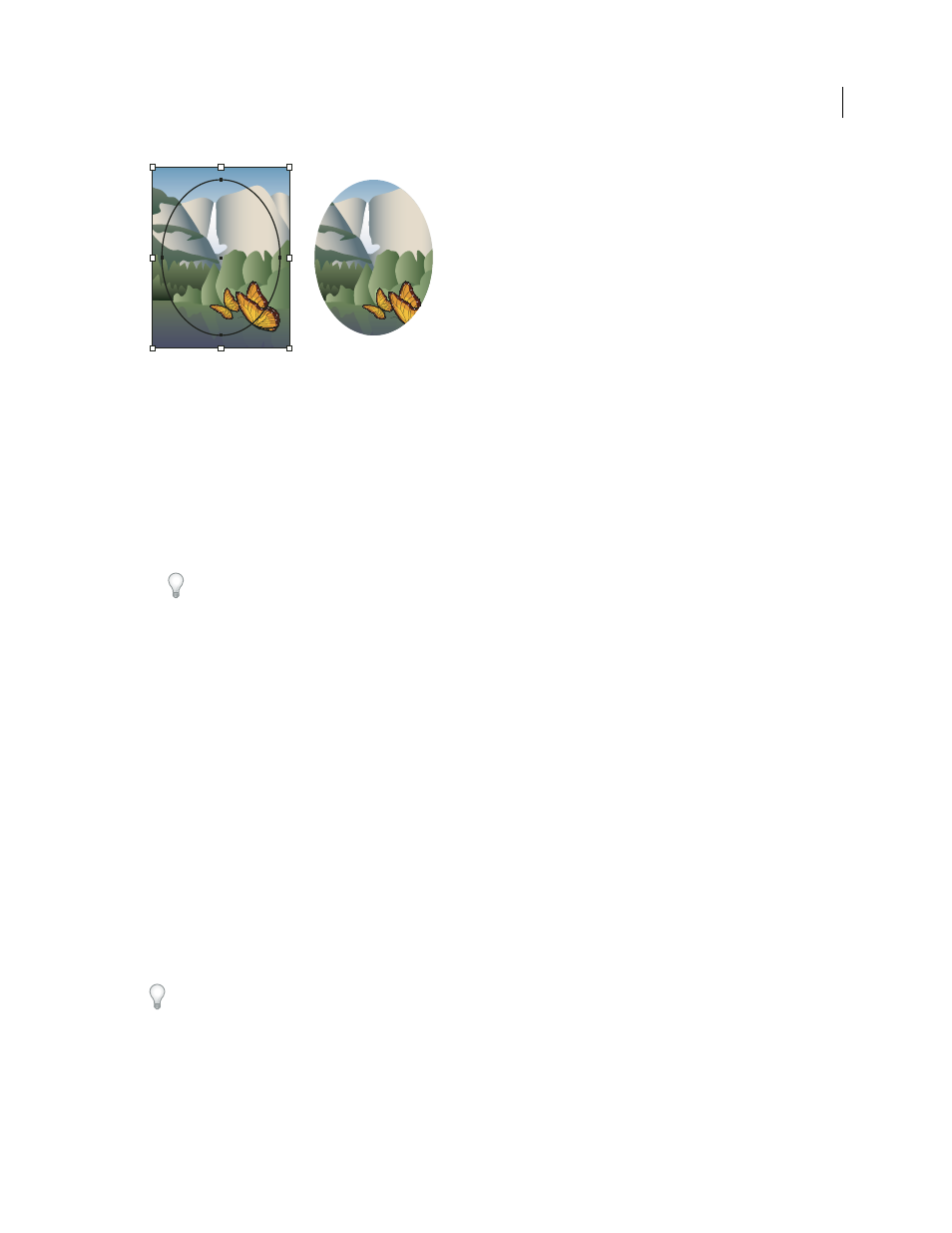Hide parts of objects with a clipping mask – Adobe Illustrator CS4 User Manual
Page 249

242
USING ADOBE ILLUSTRATOR CS4
Reshaping objects
Before masking (left) compared to after masking (right)
The following guidelines apply to creating clipping masks:
•
The objects that you mask are moved into the clipping mask’s group in the Layers panel if they don’t already reside
there.
•
Only vector objects can be clipping masks; however, any artwork can be masked.
•
If you use a layer or group to create a clipping mask, the first object in the layer or group masks everything that is
a subset of the layer or group.
•
Regardless of its previous attributes, a clipping mask changes to an object with no fill or stroke.
To create a semitransparent mask, use the Transparency panel to create an opacity mask.
See also
Methods for cutting, dividing, and trimming objects
Use opacity masks to create transparency
Hide parts of objects with a clipping mask
1
Create the object you want to use as the mask.
This object is called the clipping path. Only vector objects can be clipping paths.
2
Move the clipping path above the objects you want to mask in the stacking order.
3
Select the clipping path and the objects you want to mask.
4
Choose Object > Clipping Mask
> Make.
To create a clipping path from the area where two or more objects overlap, group the objects first.
See also